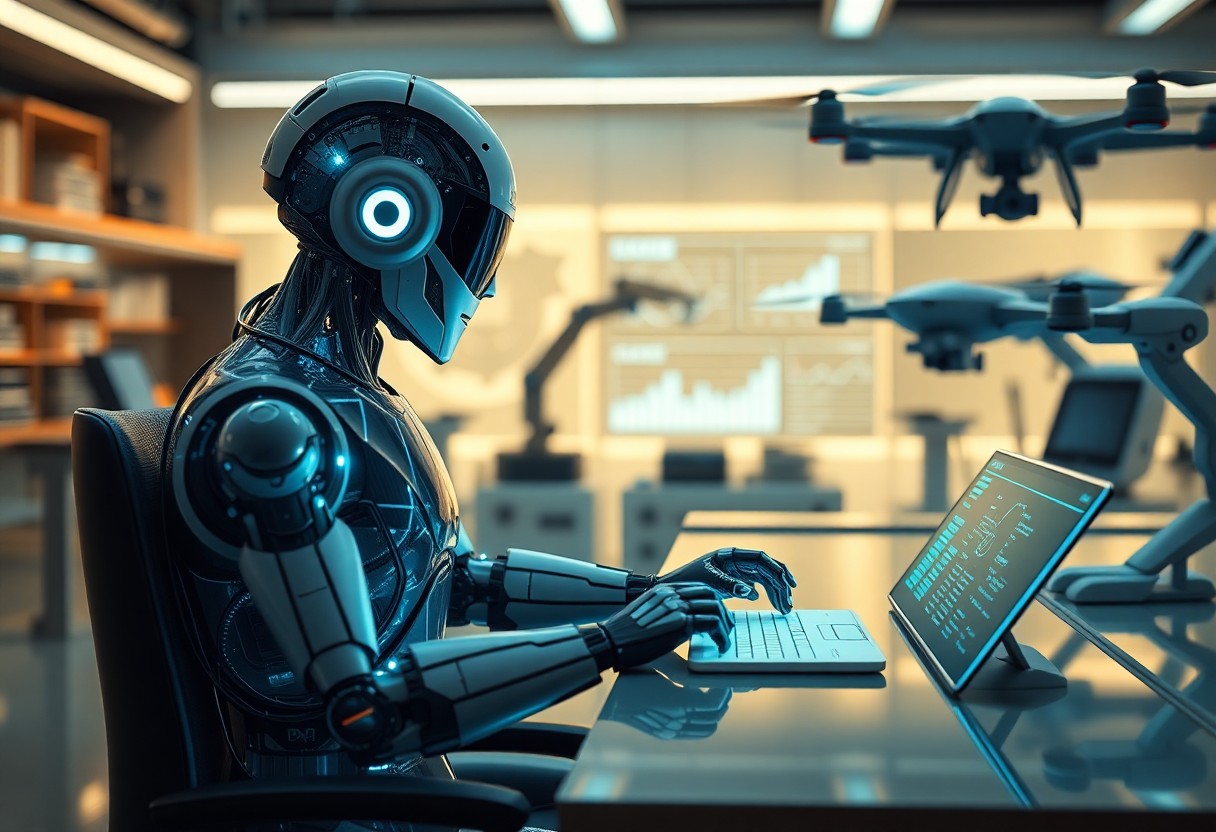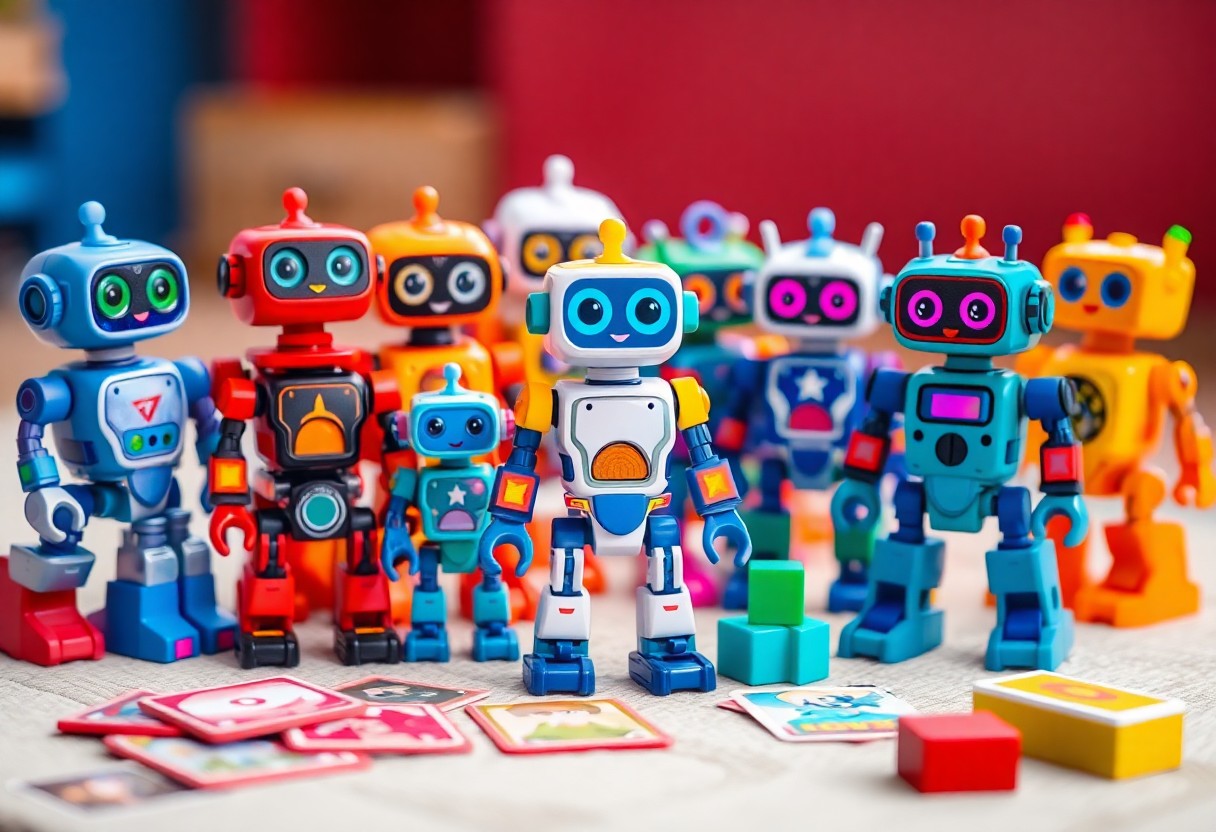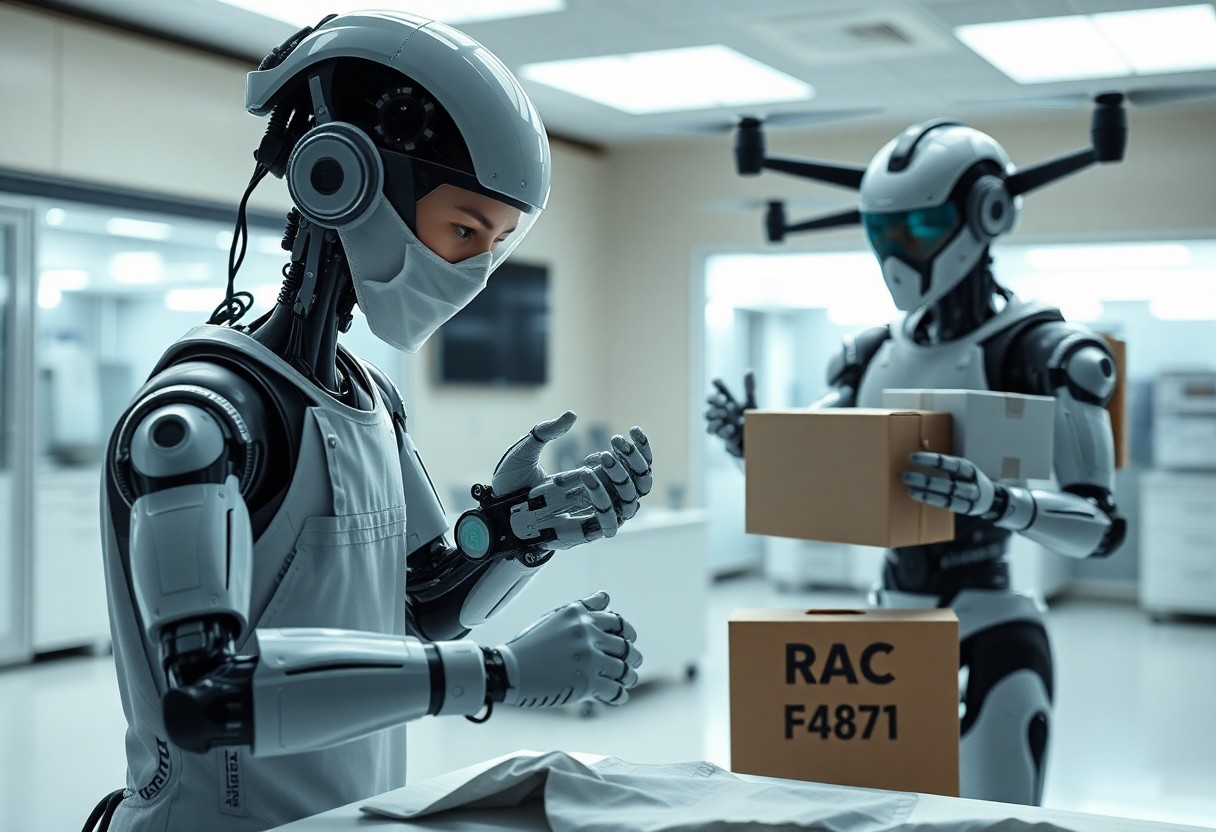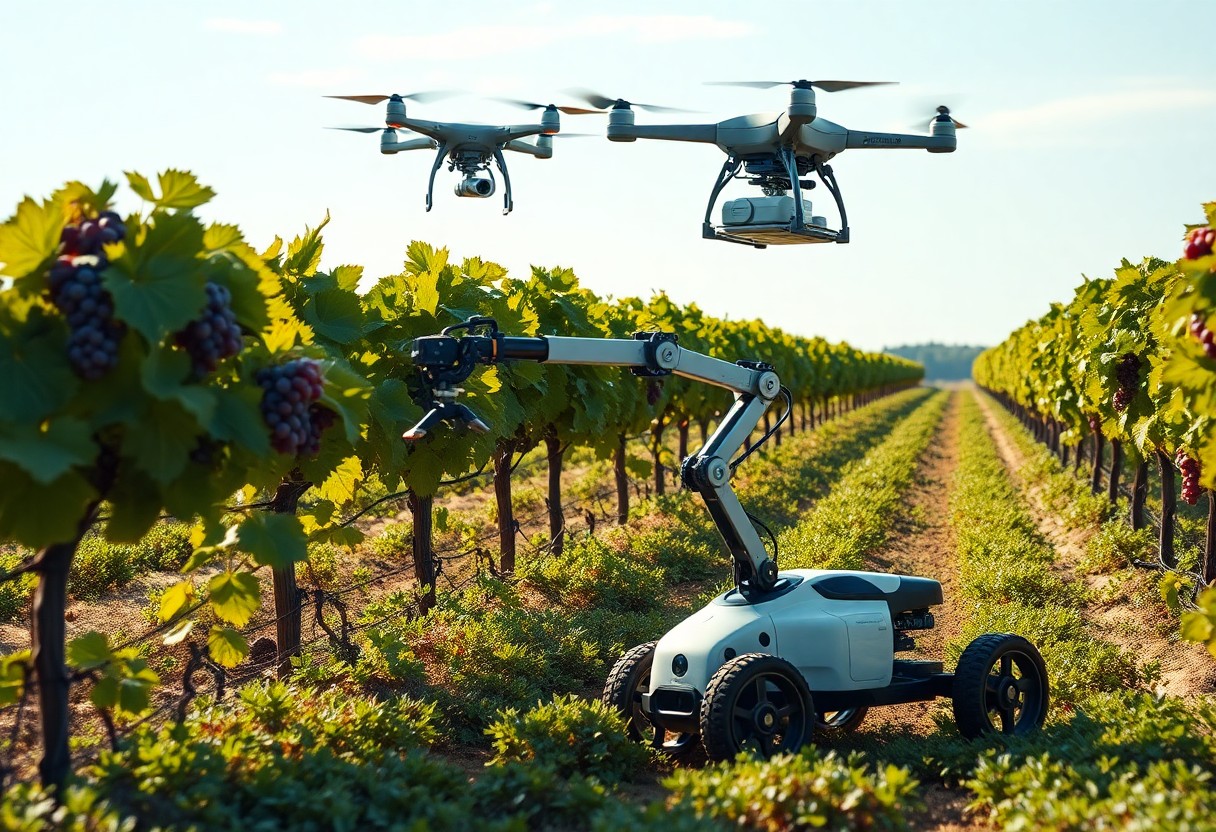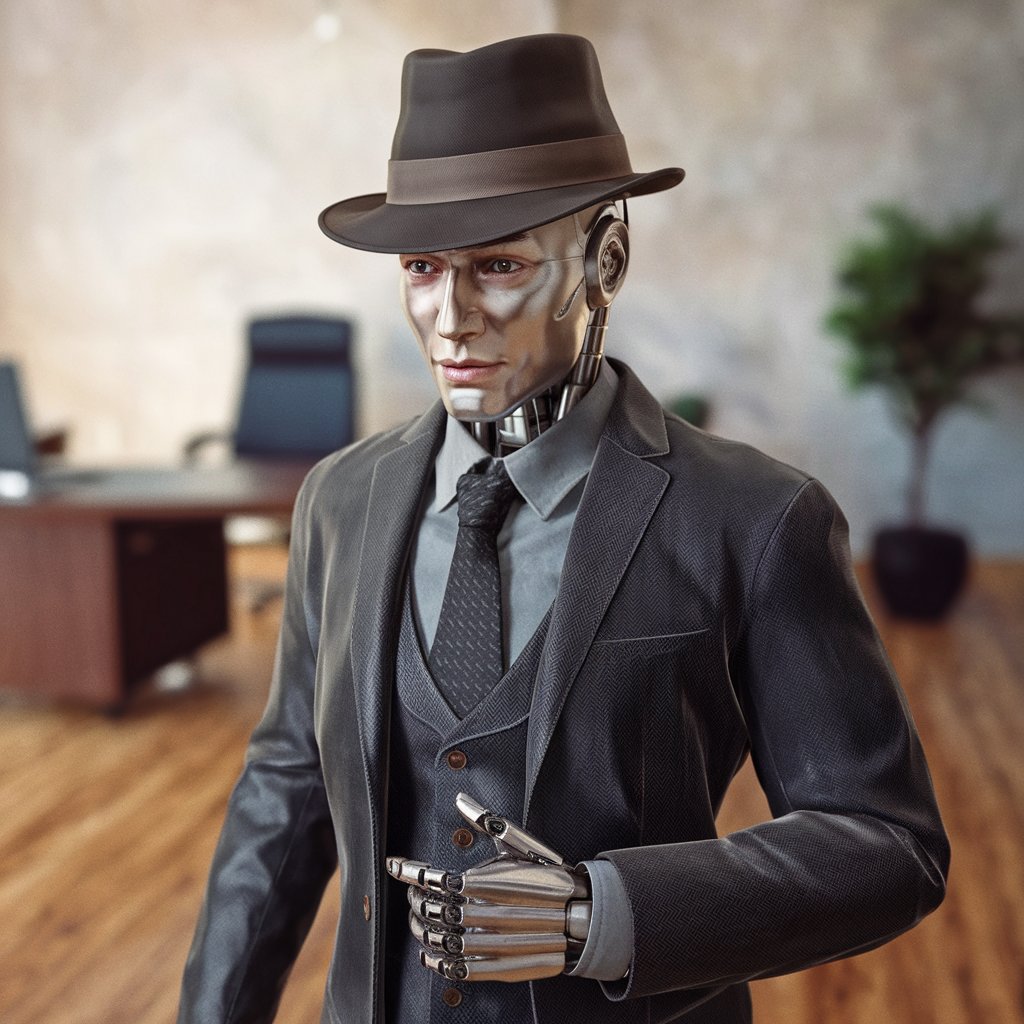It’s a fascinating era where artificial intelligence is bridging the gap between software and physical machines. As you explore into the world of AI and robotics, you’ll discover how these technologies are collaborating to create smarter, more adaptive systems. You’ll learn about machine learning algorithms that enable robots to process information and make decisions autonomously, transforming industries from manufacturing to healthcare. Understanding this synergy will not only enhance your insight into technological advancements but also prepare you for the future where intelligent machines increasingly play a vital role in your everyday life.
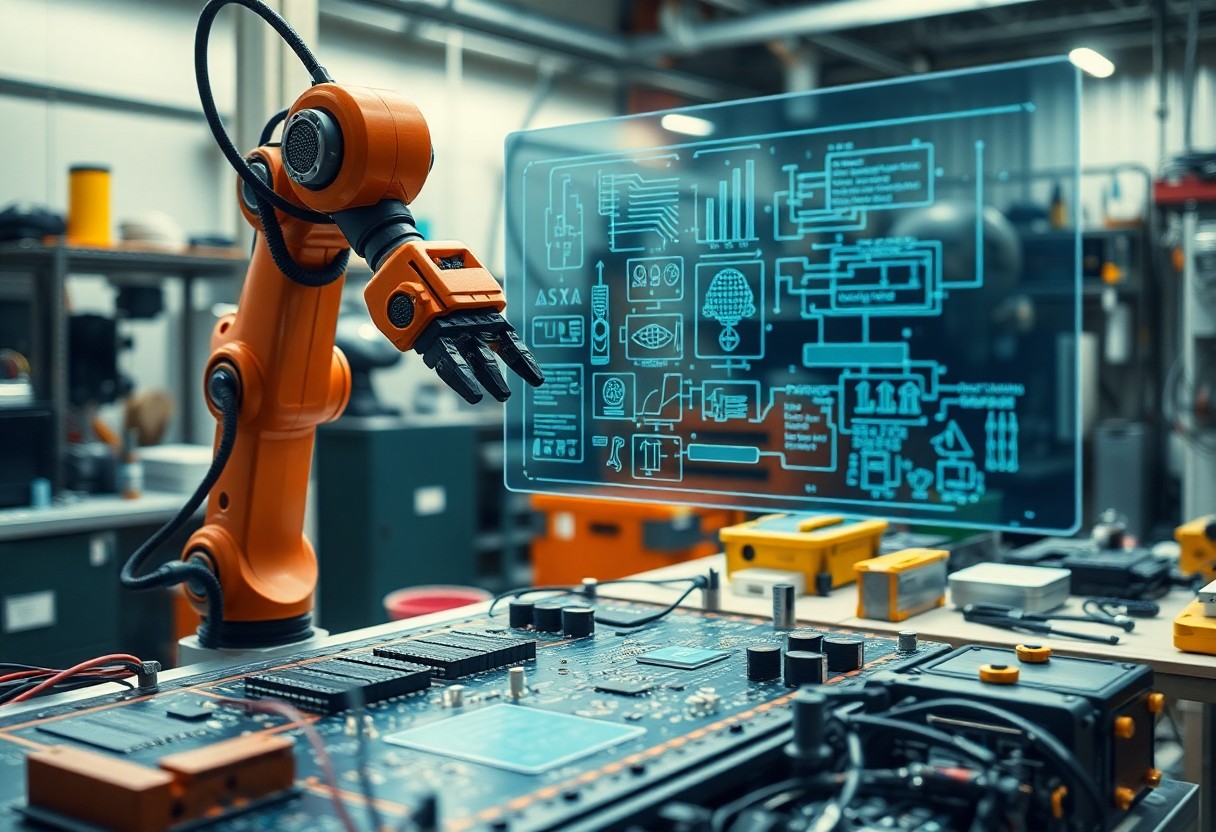
The Intelligence Engine: Decoding Machine Learning Mechanisms
Machine learning mechanisms serve as the backbone of artificial intelligence in robotics, enabling machines to process vast amounts of data and develop autonomous decision-making capabilities. By analyzing patterns and drawing inferences, robots can enhance their functionality and adaptability in an ever-evolving world. This section explores the intricacies of these mechanisms, revealing how they empower machines to navigate complex environments and improve their performance over time.
Neural Networks: The Brain Behind AI
Your understanding of artificial intelligence wouldn’t be complete without recognizing the role of neural networks, which mimic the way human brains function. These interconnected layers of nodes or neurons work together to process information and solve problems. By adjusting the weights of connections between neurons during training, neural networks learn to identify patterns, making them effective in tasks such as image recognition and natural language processing.
Reinforcement Learning: How Robots Learn from Trial and Error
Reinforcement learning revolutionizes how robots adapt to their environments by learning from feedback through trial and error. In this framework, an agent interacts with its environment and receives rewards or penalties based on its actions. Over time, your robot becomes increasingly adept at optimizing its decisions and achieving specific goals, much like a child learning to ride a bike by adjusting its balance based on previous falls and successes.
For instance, consider a robotic vacuum cleaner employing reinforcement learning. As it navigates a room, it may encounter obstacles and learn to avoid them by modifying its path over repeated attempts. Each successful cleaning cycle reinforces the behavior, while collisions provide penalties that direct its learning process. This system enables robots to operate independently and efficiently, adapting to dynamic environments, leading to improved performance and user satisfaction. You’ll see this approach being implemented across various applications, from autonomous vehicles to robotic assistants, showcasing its vast potential in advancing machine capabilities.
Sensing and Interacting: The Role of Perception in Robotics
Your understanding of robotics deepens when you appreciate the importance of perception in these machines. Sensing allows robots to gather data about their environment and make informed decisions. Advanced sensors help them navigate complex situations, recognize objects, and even interact with humans in meaningful ways. This capability is integral for developing robots that can operate autonomously or work alongside people effectively.
Advanced Vision Systems: See Like a Human, Move Like a Machine
Advanced vision systems equip robots with the ability to process visual information akin to human sight, empowering them to identify and track objects seamlessly. By utilizing machine learning algorithms, these systems analyze images and video feeds, allowing robots to execute precise movements based on their visual comprehension. This technology paves the way for applications ranging from autonomous vehicles to interactive service robots.
Key Components of Advanced Vision Systems
| Component | Description |
| Cameras | High-resolution cameras capture detailed visual data for processing. |
| Image Processing | Algorithms that interpret visual information to recognize patterns and objects. |
| Depth Sensors | Technologies such as LiDAR provide spatial awareness, improving navigation. |
| Real-time Processing | FAST computation allows immediate responses to environmental changes. |
Haptic Feedback: Enhancing Interaction Through Touch
Haptic feedback technology enriches human-robot interaction by providing tactile sensations that simulate the feel of touch. This innovative feature enables robots to convey textures, pressure, and resistance during interactions, allowing you to experience a more immersive engagement with these machines. As robots enhance their ability to communicate through touch, the future holds exciting prospects for collaborative tasks and teleoperation.
Diving deeper into haptic feedback, consider how this technology greatly enhances the usability of robotic systems in various sectors. For instance, in telemedicine, surgeons can manipulate robotic arms remotely, feeling the textures and resistance of tissues as they operate. Furthermore, in education and training, haptic interfaces provide students with hands-on experience, allowing for better retention of skills. Whether you’re in healthcare, manufacturing, or entertainment, the applications of haptic feedback are expanding, making interactions with robots more intuitive and lifelike.
Bridging the Gap: Real-World Applications of AI in Robotics
AI is seamlessly integrating into the robotic domain, redefining how machines perform tasks across various sectors. This synergy not only enhances efficiency but also significantly improves precision, making robots smarter and more dependable. From automated warehouses to healthcare solutions, your understanding of these applications will showcase how they are shaping industries and everyday life.
Autonomous Navigation: From Drones to Self-Driving Cars
Autonomous navigation technology enables drones and self-driving cars to interpret their surroundings and make informed decisions, enhancing operational safety and efficiency. Utilizing advanced sensors, LiDAR, and AI algorithms, these machines can navigate complex environments, avoiding obstacles and adapting to dynamic conditions in real-time. This breakthrough has the potential to revolutionize transportation, logistics, and even aerial surveillance.
Industrial Automation: Transforming Manufacturing Processes
The industrial landscape is being transformed through AI-driven automation, where robots streamline production processes, reduce human error, and boost operational efficiency. Factories adopting AI technologies often see a remarkable increase in productivity, dropping operational costs by as much as 30%. With precision at scale, businesses are now able to achieve levels of efficiency and accuracy previously deemed unachievable.
Consider the case of automotive manufacturing; robots powered by AI are not only assembling parts but are also learning from each process iteration. These intelligent machines can adapt to variations in tasks, reduce waste by optimizing resource usage, and enhance product quality. Companies like Tesla have integrated AI in their production lines to enable a level of customization and speed that traditional methods simply cannot match. By embracing these advancements, you could witness firsthand how AI is setting a new standard for efficiency and innovation in manufacturing, transforming not just how products are made, but also how they are delivered to consumers faster than ever before.
Ethical Considerations: The Moral Dilemmas of Thinking Machines
As AI technologies advance, ethical dilemmas surrounding their deployment arise, particularly in robotics. Questions concerning the moral implications of machines making decisions—impacting your safety, privacy, and autonomy—become increasingly pertinent. For instance, programmers need to delineate the ethical frameworks that will guide robots in life-and-death situations, including autonomous vehicles. As these technologies evolve, the societal norms surrounding ethical use will need examination and refinement, ensuring accountability and transparency are prioritized in machine behavior.
Job Displacement: Balancing Innovation with Employment
AI-driven robotics have the potential to enhance efficiency, but they also raise concerns about job displacement across various sectors. While innovations can streamline workflows and boost productivity, you may find yourself in an uncertain employment landscape, as roles become automated. Striking a balance between leveraging new technologies and safeguarding jobs is vital, requiring collaboration among industry leaders, policymakers, and educators to prepare the workforce for changing demands.
Decision-Making Autonomy: Who Holds the Responsibility?
The issue of decision-making authority in autonomous robotics leads to complex questions about accountability. If a robot makes a harmful decision, determining who is responsible—the manufacturer, programmer, or even the machine itself—presents a significant challenge. Establishing a framework that clearly defines responsibility is vital, particularly in high-stakes scenarios, such as military applications or healthcare interventions, where consequences can be severe. Engaging stakeholders in discussions around accountability ensures that ethical standards are upheld, drawing upon legal precedents and evolving social values.
For instance, in 2018, an autonomous vehicle was involved in a fatal accident that ignited debates over liability. Did the car manufacturer bear the responsibility for programming decisions, or should the driver have intervened? Cases like this highlight the necessity for clear guidelines and accountability structures in the rapidly evolving landscape of intelligent machines. As technology improves, you must advocate for transparency in decision-making processes and recognize the need for regulatory frameworks to address the moral responsibilities of AI developers and users alike.
The Future Frontier: What Lies Ahead in AI and Robotics
As we stand at the crossroads of innovation, the confluence of AI and robotics promises to reshape industries and daily life in unprecedented ways. You can expect smarter, more adaptive machines that not only complete tasks autonomously but also interact intuitively with humans. The horizon is illuminated by potential developments in intelligent automation, human-robot collaboration, and advanced learning algorithms that anticipate needs and enhance execution across various sectors. The synergy between AI and robotics extends a glimpse into a future where machines become even more integral to our existence.
Synergy of Human and Machine Intelligence
The collaboration between human insight and machine efficiency creates opportunities for remarkable advancements. You are witnessing AI systems that learn from human input, allowing robots to improve their functioning based on real-world experiences. This human-machine collaboration isn’t just about efficiency; it enhances creativity and problem-solving, unlocking novel solutions to complex challenges that neither could tackle alone.
Anticipating the Next Technological Revolution
The next wave of technological revolutions will be driven by advanced AI and robotics, which you can already see in industries like healthcare, transportation, and manufacturing. As machines become smarter, they will reduce errors, optimize supply chains, and even predict healthcare needs based on vast data analysis. This impending technological shift promises not only efficiency but also economic growth and enhanced quality of life through personalized solutions that cater to individual preferences.
Anticipating this next revolution means embracing a paradigm where AI and robotics will redefine work. For instance, in healthcare, robotic assistants equipped with AI can identify patterns in patient data, improving diagnostics and treatment plans. Similarly, in agriculture, smart robotics can yield accurate forecasts for crop management and resource allocation, increasing food security. You should prepare for a landscape where human and machine capabilities converge, driving productivity and innovation while addressing complex societal challenges with a level of precision previously thought impossible.
Final Words
Hence, as you explore the intersection of AI and robotics, you’ll discover how these machines are evolving to think and act autonomously. With each advancement, your understanding of their capabilities will deepen, unlocking new applications across various industries. Embracing this technology not only enhances efficiency but also opens doors to innovative solutions you may not have considered. The future of automation lies in the synergy between AI and robotics, inviting you to be at the forefront of this incredible journey.

